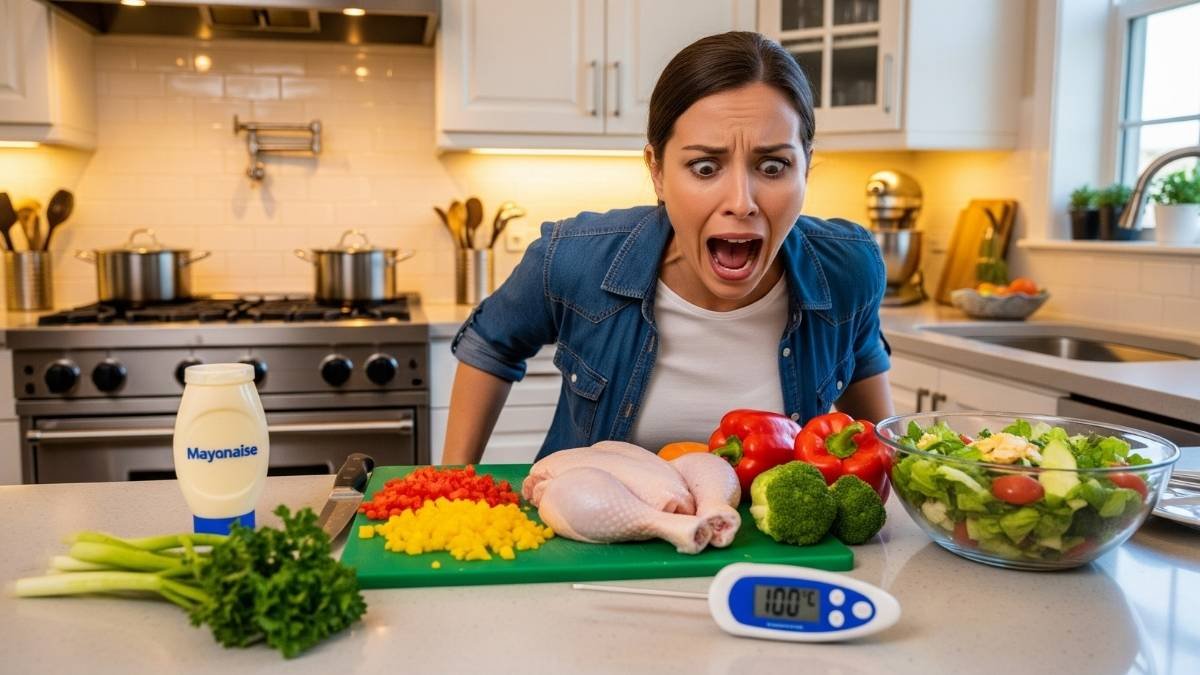
You wash your hands. You clean your counters. You keep your fridge cold.
So why are food safety experts calling what’s happening in American kitchens “absolutely horrifying”?
Here’s the thing that’s going to blow your mind: 97% of people fail at the most basic kitchen safety rule. Not 50%. Not 70%. Ninety-seven percent.
And before you think “well, not me” – that’s exactly what everyone else thought too.
The shocking truth hiding in plain sight
🚨 The Hidden Epidemic in Your Kitchen
You’re making dinner after a long day. You handle some raw chicken, give your hands a quick rinse, grab the salt shaker, season the chicken, then use that same salt shaker on the salad you’re making for the kids.
Sound familiar? You’ve just created what food scientists call a “contamination superhighway” – and you probably didn’t even realize it.
Here’s what should scare you: 48 million Americans get sick from foodborne illness every year. That’s 1 in 6 people. We’re talking 128,000 hospitalizations and 3,000 deaths from something that’s almost entirely preventable.
But here’s what should keep you up at night: most of these illnesses don’t come from restaurants or food processing plants. They come from home kitchens. Your kitchen.
The handwashing disaster you never saw coming
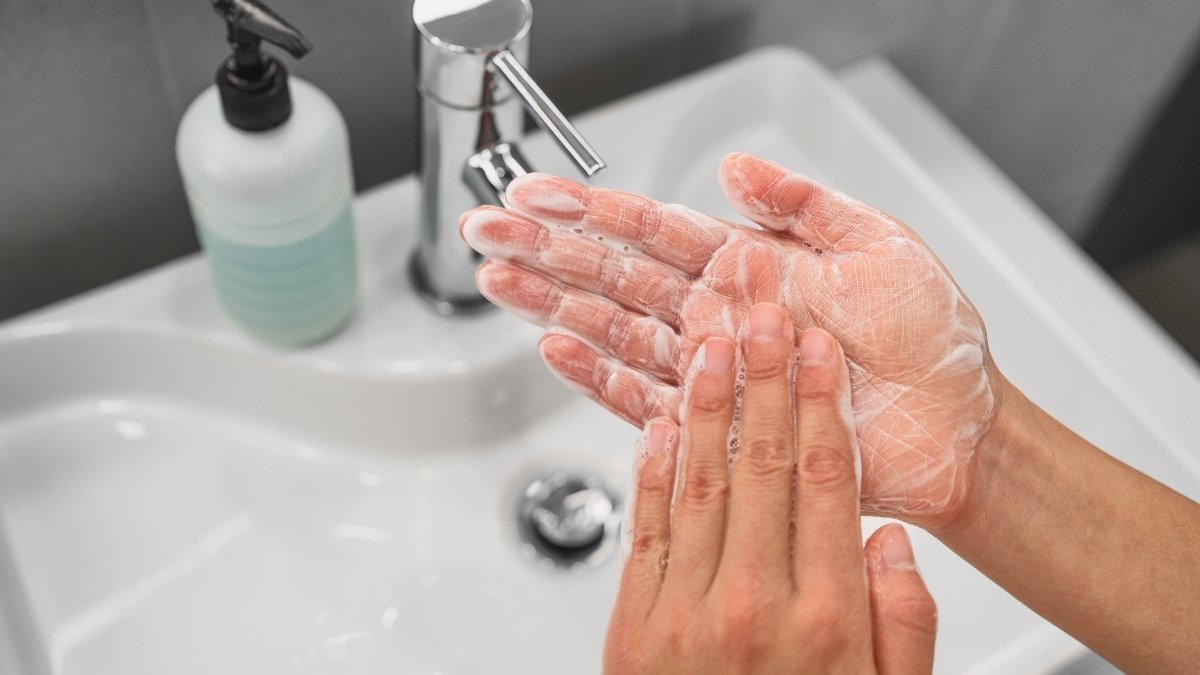
Let me share something that’s going to change how you think about kitchen safety forever.
USDA researchers recently did something brilliant (and slightly creepy). They put motion-sensitive cameras in real kitchens and watched what people do – not what they say they do, but what they do when nobody’s watching.
The results were devastating.
Out of 1,195 times when handwashing was necessary to prevent contamination, people failed to wash their hands properly 97% of the time. Not failed to wash them at all – failed to wash them properly.
Think about that for a second. You could be washing your hands every single time and still be spreading dangerous bacteria throughout your kitchen.
Here’s why your handwashing probably isn’t working

You know that quick rinse under cold water? That’s not handwashing.
You know that 5-second scrub with soap? Still not cutting it.
Real handwashing – the kind that kills bacteria – takes 20 seconds with soap and warm water. That’s long enough to sing “Happy Birthday” twice. When’s the last time you did that in your kitchen?
Don’t feel bad. 89% of foodborne illness outbreaks linked to food workers came from hand contamination. Even professionals mess this up.
The temperature trap that’s worse than you think
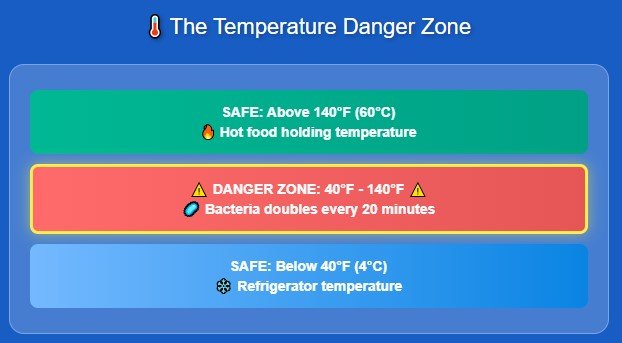
Okay, so maybe you’re thinking, “Fine, I’ll wash my hands better. But I keep my food at safe temperatures.”
Do you really, though?
Here’s a question that might make you uncomfortable: When’s the last time you used a food thermometer to check if your chicken was done? Not “looks done” or “feels done” – measured the internal temperature?
If you’re like 66% of Americans, the answer is “never” or “I don’t even own one.”
The danger zone is everywhere
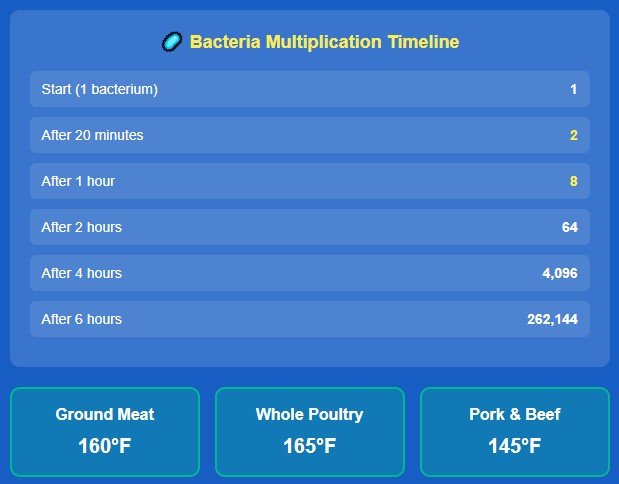
Between 40°F and 140°F, bacteria doubles every 20 minutes. Every. Twenty. Minutes.
That leftover pizza sitting on the counter for three hours? It’s gone from a few bacteria to potentially millions. That chicken you pulled out to thaw this morning and forgot about? Same story.
Here’s the kicker: You can’t see it, smell it, or taste it. The food looks perfectly normal while it’s becoming a bacterial time bomb.
Your spice rack is probably a contamination factory
🦠 The Hidden Contamination Highway
This one’s going to hurt, but you need to hear it.
Remember that contamination superhighway I mentioned? Your spice containers are Grand Central Station.
Here’s what happens (and I bet you’ve done this a thousand times):
- You’re handling raw meat
- You reach for the garlic powder with contaminated hands
- That container is now contaminated
- Later, you use that same container while making a salad
- Boom. Cross-contamination.
Clemson University found that 48% of spice containers in their study showed signs of cross-contamination. Even worse, they had higher bacterial counts than garbage can lids.
Your garbage can lid is cleaner than your oregano.
The sponge situation is even worse
Let’s talk about that kitchen sponge you’ve been using for… how long now? A week? Two weeks?
That innocent-looking sponge is harboring more bacteria than you want to know about. Studies show that 32% of people use the same sponge to clean ovens, sinks, refrigerators, AND floor spills.
You’re basically taking bacteria from your floor and spreading it to every surface in your kitchen. Every time you “clean.”
Why smart people keep making dangerous mistakes

Here’s the part that food safety experts find most frustrating:
It’s not that people don’t know better.
95% of food handlers receive proper training. They score 67% on food safety knowledge tests. They know what they’re supposed to do.
So why don’t they do it?
The “not me” problem
Psychologists call it “optimism bias.” You know cross-contamination is dangerous, but you don’t think it’ll happen to you. You think you’re more careful than other people. You think you’ll notice if something’s wrong.
You won’t.
The UK’s Food Standards Agency put cameras in 70 households and found that people consistently chose convenience over safety. When you’re tired, stressed, or in a hurry, those safety rules go right out the window.
And here’s the scary part: You probably don’t even realize you’re doing it.
The myths that are putting your family at risk
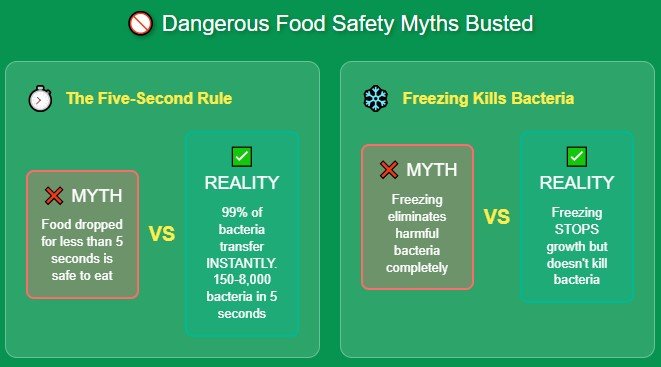
Let’s bust some dangerous myths that might be lurking in your kitchen right now:
“The five-second rule is real.”
Nope. Bacteria transfer happens “almost instantaneously.” We’re talking 150-8,000 bacteria in just five seconds – more than enough to make you sick.
“Freezing kills bacteria.”
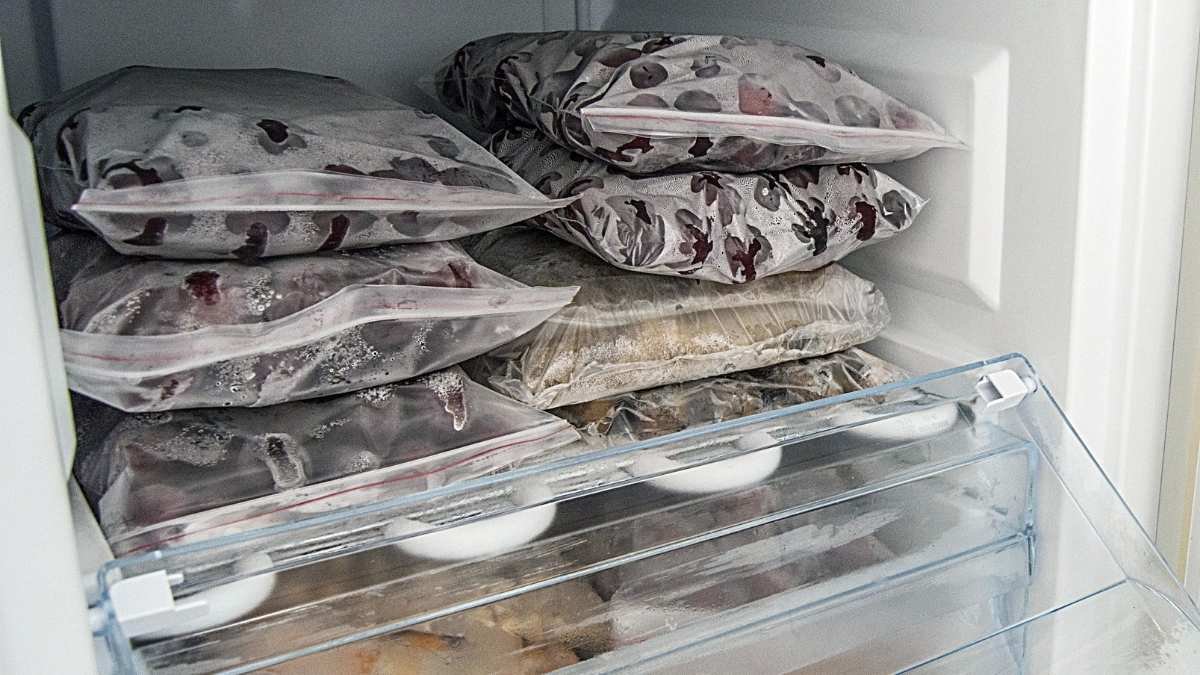
Wrong again. Freezing stops bacteria from growing, but it doesn’t kill them. When you thaw that contaminated food, you’re back where you started.
“I can tell if food is cooked by looking at it.”
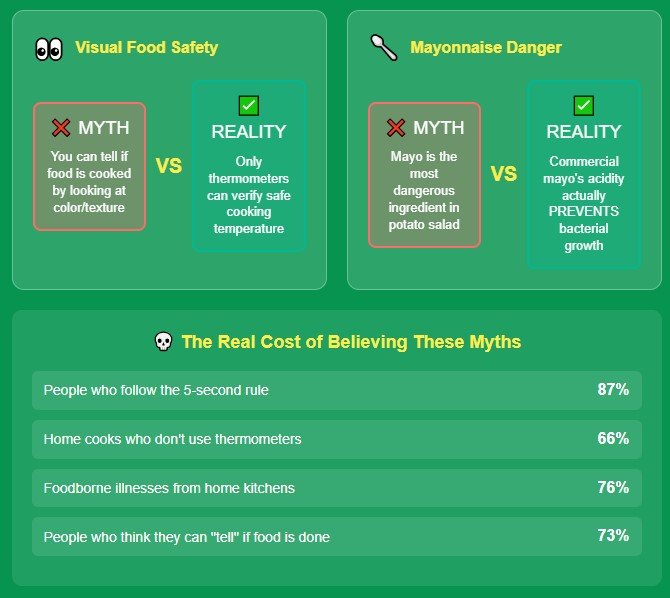
Not. You cannot determine safe cooking temperature by color, texture, or any other visual cue. Period.
“Store-bought mayo is dangerous.”
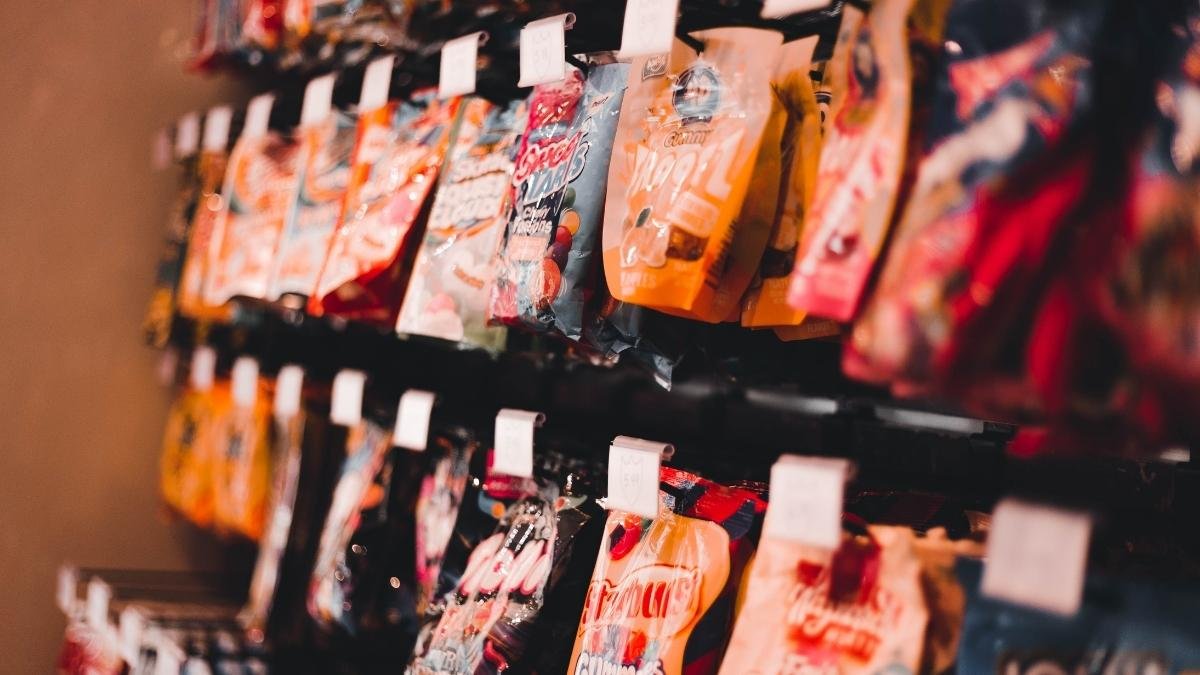
The opposite. Commercial mayonnaise is highly acidic and helps prevent bacterial growth. That potato salad that went bad? It wasn’t the mayo’s fault.
The real cost of kitchen mistakes
💰 The True Cost of Kitchen Mistakes
This isn’t just about a stomach ache that lasts a day or two.
Foodborne illness costs the US $75-77 billion every year. That’s not just healthcare costs – that’s lost work, long-term health problems, and families dealing with preventable tragedies.
Children under 5 carry 40% of the global foodborne disease burden. Adults over 65 face hospitalization rates approaching 50% for confirmed foodborne illnesses.
These aren’t just statistics. These are real families dealing with real consequences from preventable kitchen mistakes.
The groups at highest risk (you might be surprised)

Are you or someone in your family:
- Pregnant? (20x higher risk for listeriosis)
- Over 65? (much higher hospitalization rates)
- Under 5? (carries 40% of the disease burden)
- Immunocompromised? (dramatically elevated risks)
If you answered yes to any of these, every kitchen safety rule becomes even more critical.
What’s making this problem worse right now
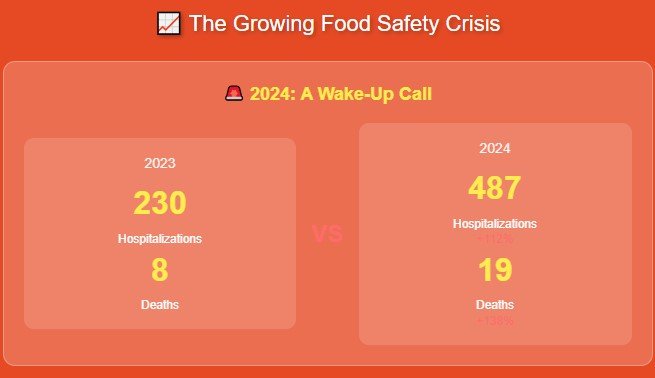
2024 has been a wake-up call. Foodborne illness hospitalizations more than doubled from 230 to 487. Deaths more than doubled from 8 to 19.
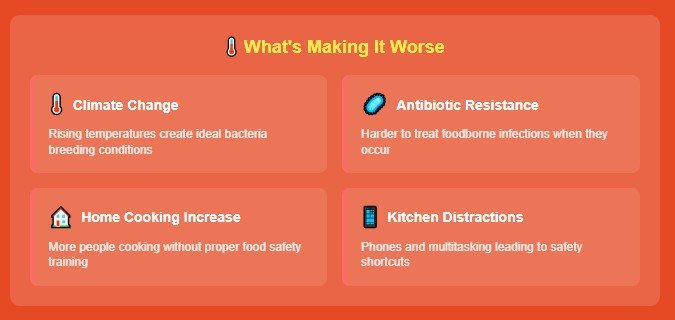
Climate change isn’t helping either. Rising temperatures create perfect breeding conditions for dangerous bacteria. Summer months see 33% of all foodborne illnesses, with August being the absolute worst.
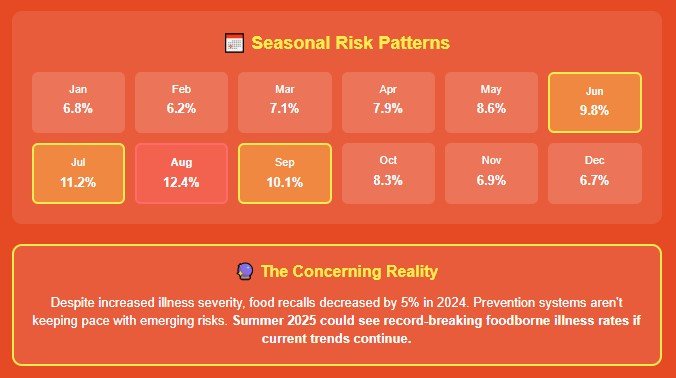
And here’s something that should worry everyone: despite more severe illnesses, food recalls decreased by 5%. Our prevention systems aren’t keeping up with emerging risks.
The science-backed solution that works
✅ Your 5-Step Food Safety Action Plan
Ready for some good news? This is fixable.
You don’t need to become a food safety expert. You don’t need expensive equipment. You just need to focus on five critical areas:
1. Master the 20-second handwash
This is your #1 priority. Warm water, soap, 20 seconds. Every single time you touch raw meat, eggs, or unwashed produce. No exceptions.
2. Use a food thermometer religiously
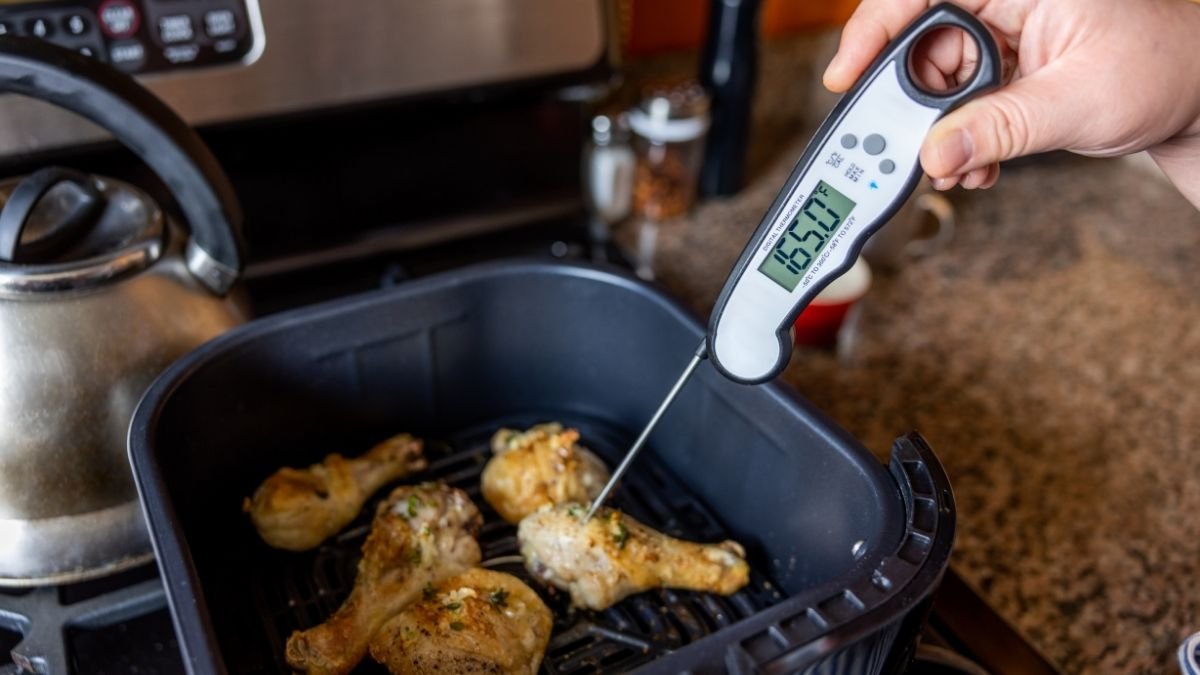
Ground meat: 160°F. Whole poultry: 165°F. Pork and beef: 145°F. These aren’t suggestions – they’re requirements.
3. Follow the 2-hour rule
Perishable food can’t sit at room temperature for more than 2 hours. In hot weather (above 90°F), it’s only 1 hour.
4. Separate raw and ready-to-eat foods
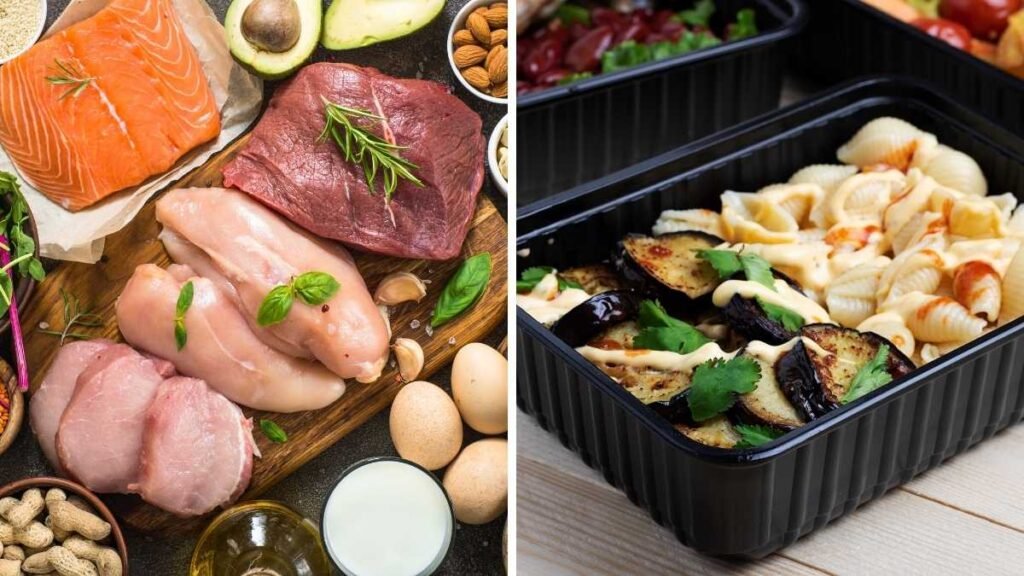
Different cutting boards. Different utensils. Different hands. Cross-contamination happens faster than you think.
5. Clean your contamination superhighways
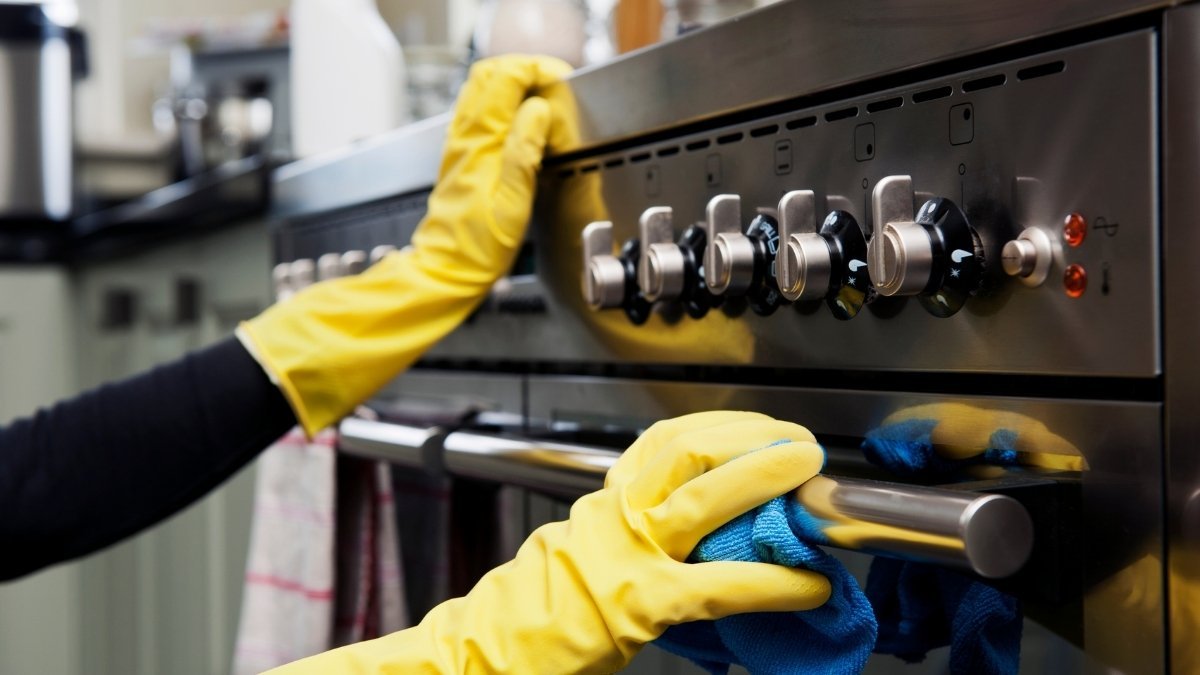
That means spice containers, can openers, kitchen phones, and yes – replacing that ancient sponge regularly.
Small changes that make a huge difference
Here’s what works in real kitchens:
Keep hand sanitizer at contamination points. Next to your spice rack, by your cutting boards, anywhere you handle raw food.
Use multiple cutting boards. One for raw meat, one for everything else. Color-code them if that helps you remember.
Set phone timers for temperature-sensitive tasks. Don’t rely on your memory when bacteria are doubling every 20 minutes.
Replace sponges weekly. Or better yet, use paper towels for cleaning up after raw meat.
Position your food thermometer where you’ll use it. If it’s buried in a drawer, you won’t use it.
The bottom line: your family’s health is worth 30 extra seconds
Look, I get it. You’re busy. You’ve got a million things on your mind. Adding more steps to dinner prep feels overwhelming.
But here’s the thing: these aren’t extra steps. They’re the actual steps. Everything else is just cutting corners and hoping for the best.
Countries with better food safety outcomes prove that dramatic improvements are possible. The US ranks 13th globally in food safety – behind Finland, Ireland, and Norway. That means American families are getting sick at higher rates than necessary.
The 97% handwashing failure rate isn’t inevitable. It’s the result of inadequate awareness and habits that can be changed.
Your next step starts right now
Here’s what I want you to do today:
Go to your kitchen. Look at your spice rack, your sponge, your cutting boards. Look at them through the lens of what you’ve just learned.
Then make one change. Just one. Maybe it’s buying a food thermometer. Maybe it’s setting a timer to remind yourself to wash your hands properly. Maybe it’s finally throwing out that sketchy sponge.
Small changes compound into life-saving habits.
Your family’s health is counting on the choices you make in your kitchen every single day. The science is clear, the solutions are simple, and the time to act is right now.
What’s the first change you’re going to make?






